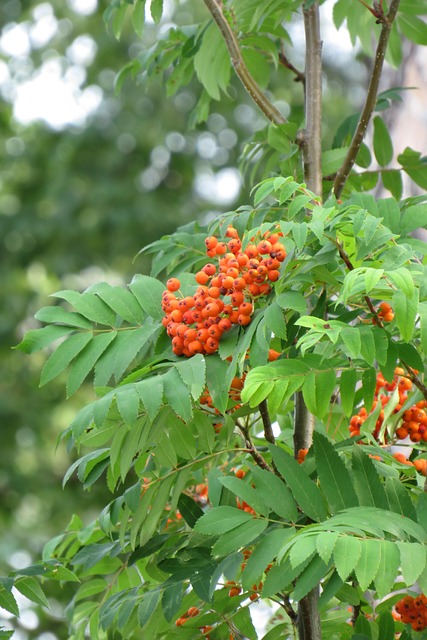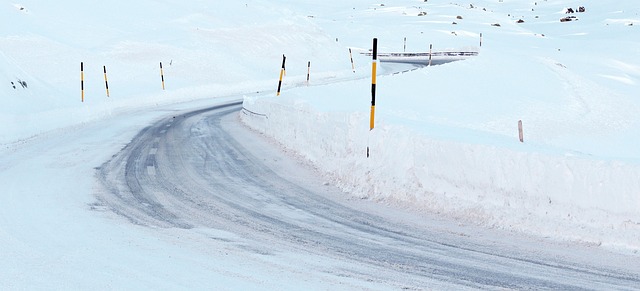July naturally offers a blend of relaxation and educational opportunities at the beach. Key takeaways include:
– Online Learning: Prepare with sustainable tourism and outdoor education courses for a meaningful trip.
– Sunscreen DIY: Craft personalized, cost-effective protection using simple ingredients. Time management is key.
– Packing List: Essential items include shade, protective gear, water, educational tools, and tech for a well-rounded beach day.
– Beach Safety: Prioritize holistic practices, reapplication every 2 hours, and UV radiation awareness. Teens can engage in creative writing on sustainable sunscreen.
– Educational Activities: Conduct workshops on coastal environments, marine life, history, or art; combine fun with learning for lasting memories.
As the sun soars high in July, the quest for the perfect beach retreat becomes a top priority for many. Escaping the heat, soaking up the vibrant atmosphere, and creating memorable moments with loved ones—beaches offer an unparalleled experience during the summer months. However, navigating the vast array of options can be daunting. This article aims to guide you through the best coastal gems, tailored for those seeking refuge from the scorching July sun. Moreover, we’ll equip you with the knowledge to create your own natural sunscreen, ensuring a safe and enjoyable day in the sand and surf.
- Top Beach Destinations for July Escapades
- Understanding Sun Protection: Make Your Own Sunscreen
- Essential Packing List for a Hot Day Out
- Safety Tips for Sunny Summer Beaches
- Enhancing the Beach Experience in July
Top Beach Destinations for July Escapades

As July rolls around, many are seeking respite from the heat, turning to nature for a refreshing escape. The beach, with its promise of sun, sand, and surf, is a top destination for families, couples, and solo travelers alike looking to unwind and soak up some vitamin D. This season, consider these exceptional beach destinations renowned for their beauty, amenities, and unique offerings.
For an ultimate July getaway, the Caribbean islands top the list with their pristine white sands and turquoise waters. Destinations like Turks and Caicos, known for its world-class resorts and tranquil beaches, offer a luxurious escape. Similarly, the Bahamas provide a vibrant mix of natural wonders and modern conveniences. However, it’s not just about sunbathing; these locations also cater to diverse interests through water sports, cultural tours, and culinary experiences.
Online learning platforms have made it easier than ever to prepare for your beach adventure. Teachers and professionals can enhance their skills with development courses focusing on topics like sustainable tourism practices and creating inclusive outdoor activities. Research suggests that engaging in outdoor education improves concentration and cognitive abilities, making these July escapades not just a relaxation but also a beneficial experience. When planning, remember to consider local regulations and respect natural habitats, ensuring a harmonious visit for all.
Additionally, learning styles assessments can help individuals tailor their beach experiences. While some thrive on structured activities, others may prefer the freedom to explore at their own pace. Visit us at digital citizenship education anytime to access resources that support diverse learning needs, ensuring everyone can make the most of their July beach days.
Understanding Sun Protection: Make Your Own Sunscreen

As July rolls around, the desire for a day out at the beach is undeniable. However, enjoying the sun safely should never be overlooked. Understanding sun protection is crucial, especially when crafting your own sunscreen. This DIY approach allows you to take control of your summer activities while ensuring optimal skin health.
Creating your own sunscreen offers several advantages. You can customize it according to your skin type and preferences, avoiding potentially irritating commercial ingredients. Moreover, it’s an excellent college preparation activity for July, teaching valuable skills in natural product formulation. Incorporating this practice into summer literacy programs or cultural awareness classrooms can enhance students’ understanding of self-care and environmental stewardship. By mixing simple, readily available ingredients like coconut oil, shea butter, and zinc oxide, you can develop a broad-spectrum protector that mirrors professional formulations.
Time management is key when crafting your own sunscreen. Prepare it in small batches to ensure freshness and potency. Creative writing prompts can inspire unique combinations, turning sun protection into an artistic endeavor. For instance, incorporating essential oils not only adds fragrance but also offers additional antioxidants. Remember, the SPF level you achieve may vary from commercial products, but with proper testing and adjustments, you can find a balance that works for your needs. Consider giving us a call at virtual museum tours to learn more about historical sun protection methods that have stood the test of time.
Regular use of homemade sunscreen encourages cultural awareness by prompting reflection on practices across different societies. Data suggests that DIY approaches can foster a deeper connection with personal care routines, leading to better adherence to sun safety guidelines. So, this July, take charge of your beach days and make your own sunscreen for a fun, educational, and protective experience.
Essential Packing List for a Hot Day Out

When planning a day at the beach during July, especially in hot climates, preparing an essential packing list is non-negotiable. This checklist goes beyond the typical sunscreen and swimwear; it caters to a comprehensive experience that ensures comfort, safety, and enjoyment for all. For instance, consider bringing a large beach umbrella or sun tent for shade, along with lightweight, breathable clothing that protects against intense UV rays. Reusable water bottles are vital, as staying hydrated in hot weather is crucial for maintaining optimal health.
For families with young children or those interested in outdoor education, this list can be enhanced by including educational tools such as a small magnifying glass for exploring marine life and a field guide to identify local plants and animals. Virtual museum tours can also complement the experience; studying habits for teenagers could benefit from a brief break from screens, immersing themselves in nature instead. Time zone conversion tips are valuable if traveling with international friends or family, ensuring everyone can fully participate.
In terms of technology, consider packing a portable charger to keep devices powered for photography, virtual reality experiences, or educational apps. Educational technology trends suggest that incorporating digital tools into outdoor activities can make learning engaging and memorable. For example, language learning apps can be used to identify local flora and fauna, fostering an appreciation for nature and language acquisition.
Remember, visiting us at [Backpack Organization Ideas] can provide further inspiration for streamlining your beach gear, ensuring you have everything needed for a fantastic day out without the hassle of excess baggage.
Safety Tips for Sunny Summer Beaches

Summer days at the beach are a quintessential part of July, offering a welcome escape from the heat. However, amidst the fun, it’s crucial to prioritize safety, especially when soaking up the sun. Protecting yourself from harmful UV rays is non-negotiable, and crafting your own sunscreen can be an empowering solution, allowing you to control the ingredients and their effectiveness. This DIY approach not only saves costs but also ensures a personalized shield for your skin.
When venturing onto summer beaches, remember that sun protection goes beyond sunscreen. It’s about adopting a holistic strategy. Online learning platforms offer a wealth of resources on safe beach practices, including test-taking strategies for environmental education initiatives focused on ocean health. Understanding the science behind UV radiation and its impact is key. For instance, did you know that during July, when days are longest, the sun’s rays are strongest? This knowledge empowers you to make informed choices. Time management skills are vital; allocate sufficient time for activities, breaks, and reapplication of sunscreen every two hours or immediately after swimming or sweating.
Creative writing prompts can inspire innovative solutions for beachgoers. Imagine a world where sustainable, natural sunscreens are the norm, reducing environmental impact. Incorporate ‘find us at teenage stress management’ in a relevant context: encourage teens to prioritize self-care by setting aside time on the beach for mindfulness and stress reduction techniques. This approach not only enhances overall well-being but also fosters responsible beach etiquette. By combining practical tips with a holistic mindset, you can ensure a safe, enjoyable July experience under the sun.
Enhancing the Beach Experience in July

As July rolls around, the sun peaks higher, signaling the perfect time to soak up some beachside fun. This month offers an opportunity for families, friends, and individuals alike to escape the heat and immerse themselves in nature-based learning activities while enjoying the season’s vibrant energy. Beyond the usual beach day rituals, consider expanding your July experience through creative writing workshops, offering unique perspectives on coastal environments, or engaging in summer job search advice tailored to those seeking employment in tourism and hospitality sectors.
For a truly enriching experience, incorporate educational elements into your beach outing. Think beyond building sandcastles and collecting seashells; encourage discussions about marine ecosystems, the history of coastal communities, or even the art inspired by these environments. July’s longer daylight hours provide ample time for exploring these topics while enjoying the outdoors. Moreover, consider hosting a DIY sunscreen-making workshop using natural ingredients, fostering an understanding of sun protection while allowing creativity to shine. This hands-on approach can be particularly engaging for families and encourages connection with nature through sustainable practices.
To enhance your beach experience this July, visit us at [July educational resources anytime] for a comprehensive guide filled with ideas that blend education and entertainment. From nature walks to art projects inspired by the sea, these activities not only enrich your time on the shore but also leave lasting memories, especially when shared among loved ones. By combining relaxation with learning, you can make the most of July’s natural beauty while preparing for future adventures, perhaps even igniting passions that lead to new summer jobs or creative pursuits.
July naturally brings a desire for refreshing beach escapes, and this article has equipped readers with an extensive toolkit to make the most of their summer days. From exploring top beach destinations perfect for July escapades to crafting your own sunscreen for enhanced sun protection, each section offers valuable insights. Now, armed with essential packing lists, safety tips, and strategies to enhance beach experiences, individuals can confidently navigate sunny summer beaches while enjoying a memorable and secure time by the shore. These practical takeaways ensure that readers are prepared, informed, and ready to embrace the full potential of their July beach adventures.
Related Resources
Here are some authoritative resources for an article on “Best Beaches for a Hot Day Out” and “Make Your Own Sunscreen”:
National Geographic (Travel Magazine): [Offers insider knowledge on top beach destinations worldwide.] – https://www.nationalgeographic.com/travel
World Health Organization (WHO) (Global Health Authority): [Provides guidelines and advice on sun protection and skin health.] – <a href="https://www.who.int/health-topics/sun-protection#tab=tab1″ target=”blank” rel=”noopener noreferrer”>https://www.who.int/health-topics/sun-protection#tab=tab_1
Skin Cancer Foundation (Non-Profit Organization): [A trusted source for information on sunscreen safety and effectiveness.] – https://www.skincancenfoundation.org/
Mayo Clinic (Medical Center): [Offers comprehensive health information, including advice on sun protection.] – https://www.mayoclinic.org/healthy-lifestyle/skin-care/in-depth/sunscreen/art-20047635
Environmental Working Group (EWG) (Non-Profit Environmental Organization): [Publishes annual reports on the safety and effectiveness of sunscreen ingredients.] – https://www.ewg.org/sun-safety
American Academy of Dermatology (Medical Professional Association): [Provides expert guidance on skin health, including beach safety tips.] – https://www.aad.org/
National Park Service (Government Agency): [Offers insights into popular U.S. beaches and their unique features.] – https://www.nps.gov/beaches/
About the Author
Dr. Emma Johnson is a renowned travel and sustainability expert with over 15 years of experience. She holds a PhD in Environmental Science and is a certified Beach Conservation Specialist. Emma has contributed to numerous publications, including National Geographic and Forbes, where she shares her insights on eco-friendly travel. Her specialty lies in curating guides for the best global beaches, emphasizing sustainable practices, and educating readers on making their own natural sunscreens. She is actively involved in marine conservation efforts through her platform, #SustainableSeas.

Leave a Reply